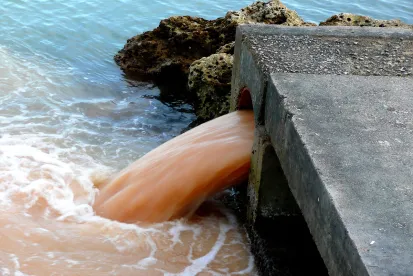Land in its natural state absorbs most precipitation, with most infiltrating into the subsurface where it is gradually released to surface water or groundwater. Only a small portion immediately becomes stormwater, either as sheet flow or channel flow to surface waters. Construction of impermeable surfaces, such as buildings and roads, causes all precipitation that falls upon those surfaces to immediately become stormwater. Thus, the construction of impermeable surfaces concentrates the amount, and accelerates the timing, of peak stormwater flow.
Stormwater Management
This sudden release to surface water exacerbates flooding, soil erosion, and water quality degradation. State and local land use, water quality, and stormwater regulations have traditionally attempted to mitigate these impacts by either limiting the amount of permissible impervious area creation in land use approvals or mandating the construction of off-site stormwater retention or infiltration basins. These efforts, while well intentioned, have failed to recognize an environmentally beneficial alternative: permeable pavement systems (“PPS”).
PPS come in many configurations, the most common being rigid pavers or sheets of hexagonal cells, where the void spaces are filled with gravel, sand, or grass. They have compression strength and weight distribution properties sufficient to support vehicles while still allowing precipitation to naturally infiltrate. These systems can infiltrate precipitation at up to 100% of that of undisturbed natural soils.
Why, then, are such PPS not more frequently utilized?
Perhaps the most frequent reason is simply that the availability of these systems is not known.
PPS might also be perceived as more expensive to maintain or to be unsightly. The frequency of maintenance depends upon the material used to fill the void spaces, with grass requiring periodic mowing. However, when compared to the cost and environmental impact of asphalt sealcoating, PPS compares favorably. While PPS can appear to be unkempt to the uneducated eye, promotion of the environmental benefits of PPS can overcome any aesthetic concerns. Moreover, when compared to the environmental benefits, efficiency, and costs of construction and maintenance of off-site stormwater basins, PPS are clearly a better alternative.
PPS would be more frequently used if regulations or site-specific approvals incentivized their use. The NJ Stormwater Management Regulations, NJAC 7:8-5.3, do that. However, many municipal approvals, especially those designed to indirectly manage stormwater, inflexibly regulate the percent of a lot’s development footprint, without giving any consideration or regulatory relief for the utilization of PPS. Those same approvals mandate off-site stormwater basins whether PPS are installed or not, thereby missing the opportunity to encourage this more effective and environmentally superior alternative.




 />i
/>i

